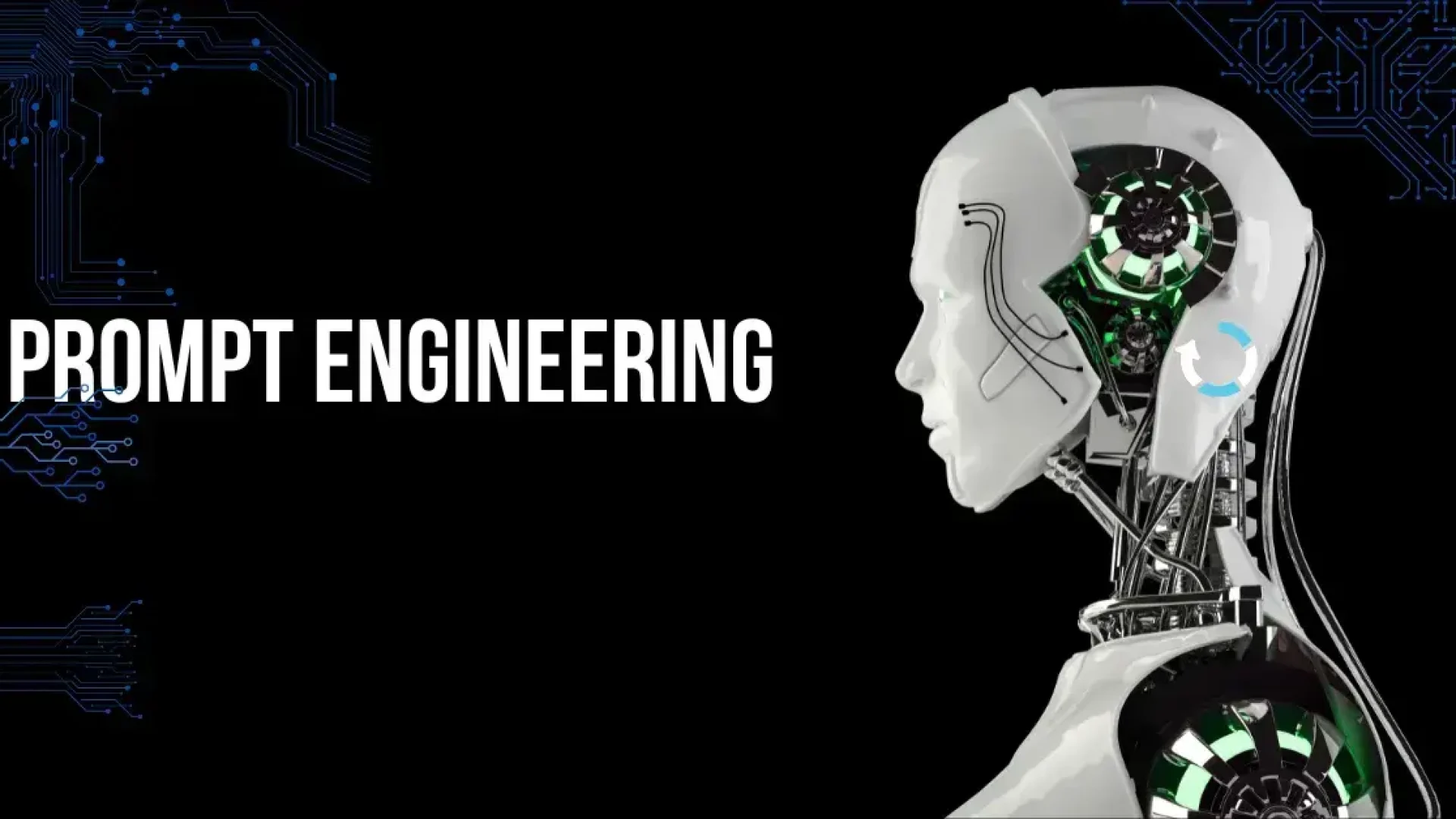Artificial intelligence (AI) is a rapidly evolving field in the technology industry. In AI, machines strive to emulate human thought processes. Amidst this progress, a subtle yet crucial art is taking shape: prompt engineering, a discipline that holds the key to the future of AI.
Imagine a world where you can converse with a machine that understands your intent and provides thoughtful, conversational responses instead of canned answers. This is not science fiction but rather the emerging field of rapid engineering—the key to realizing artificial intelligence’s full potential.
The journey will introduce the interesting field of prompt engineering, exploring its technological details and highlighting its pivotal position in the dynamic field of artificial intelligence. We’ll provide you with information and offer a variety of resources for those eager to delve deeper into the exciting connection between artificial intelligence and language processing. So fasten your seatbelts and prepare to discover the techniques for creating the ideal prompt!
What is Prompt Engineering in AI?
The process of crafting and refining prompts—questions or instructions—to elicit desired responses from AI models is known as prompt engineering. It serves as a vital bridge between machine output and human intent, enhancing the quality of human-machine interaction.
The prompt selection can greatly affect the model’s comprehension and response accuracy, especially in the broad field of artificial intelligence (AI), where models are trained on large datasets.
For example, basic prompt engineering is used when interacting with voice assistants such as Alexa or Siri. Language changes can significantly impact the response that is received. For example, “Play some soothing music” vs. “Play Beethoven’s Symphony.”
The Evolution of Prompt Engineering:
In artificial intelligence, the growing discipline of prompt engineering has been closely associated with developing powerful language models such as OpenAI’s GPT (Generative Pre-trained Transformer). Creating hints to lead AI models was less common before these transformers took over.
Simply put, earlier models weren’t made for it. They needed to gain a profound awareness of context and flexibility in response to many cues essential for productive exchanges.
2017 saw the release of transformer architecture, which revolutionized natural language processing (NLP) and marked a turning point. These new models claimed to be able to be further specialized for certain tasks (fine-tuning) after pre-training on massive amounts of data.
Prompt engineering started to take off in 2018 with the release of models like GPT. Researchers and developers realized the enormous potential of creating exact prompts to control the model’s behavior and the types of outputs it produces.
Skills Required for Becoming a Prompt Engineer
Prompt engineering requires a combination of technical expertise and creative problem-solving. The following are some essential skills you need to develop:
Technical Skills:
Programming: It’s important to be proficient in a language like Python. AI and NLP packages frequently employ Python, which makes it possible to communicate with and work with these models. Some firms may want you to assess the data generated by these models, even if you might need help to construct whole language models yourself.
Natural language processing (NLP): Understanding the fundamental ideas, methods, and libraries of NLP is essential. Become familiar with technologies like Transformers, spaCy, and NLTK for handling and analyzing linguistic data. Develop your text processing abilities from the ground up, working your way up to methods like sentiment analysis and text summarizing.
Fundamentals of Machine Learning: Although not necessarily required, understanding machine learning can be helpful. It can help you create more successful prompts by enabling you to comprehend how AI models learn and operate. It can also assist you in anticipating user behavior and customizing prompts accordingly.
Analytical and creative skills:
Good Writing Skills: The secret is to communicate effectively! You must be able to create precise, succinct, and organized prompts that effectively communicate your intended result.
Knowledge of Various Content Formats: How to write in various forms (such as poems, code, and scripts) enables you to customize prompts to produce particular results.
Analytical Thinking: It is critical to evaluate the AI model’s reaction and pinpoint areas needing development. This requires an acute sense of detail and the capacity to modify suggestions to improve outcomes.
Skills for Solving Problems: Prompt engineering is an iterative process. To achieve the desired result, be ready to try various prompts, evaluate their effects, and improve your strategy.
Additional Skills:
Domain Expertise (Optional): Although it’s only sometimes required, domain knowledge in your field can be helpful. For instance, knowing medical jargon can enable you to develop more precise and pertinent prompts if creating a chatbot for the medical industry.
Knowledge of AI Libraries & Frameworks: Familiarity with deep learning frameworks like PyTorch and TensorFlow could be helpful, primarily if you work in a research or development environment.
By developing these talents, you’ll be well on your way to becoming a proficient, prompt engineer who can realize the full potential of AI language models.
What is the Role of a Prompt Engineer?
Prompt engineering goes beyond conventional coding. It’s a captivating fusion of artistic grace and mechanical skill. A Prompt engineer uses language to their advantage to enable large language models (LLMs) to reach their full potential by serving as a connection between human intent and AI capabilities.
Here’s a closer look at the abilities that distinguish an expert prompt engineer:
Technical Expertise:
Programming Ability: Mastery of Python, the common language used in AI and NLP, is essential. Python is a technology that prompt engineers use to work with and modify AI models, examine data outputs, and create customized tools.
NLP Fundamentals: Understanding core NLP concepts, techniques, and libraries like NLTK, spaCy, and Transformers is essential. This gives them the tools to manage and evaluate linguistic input, carry out operations like sentiment analysis, and create prompts that the AI model can understand.
Machine Learning Savvy (Optional): Understanding machine learning might help you better understand how AI models work and learn, while it’s not necessarily required. This enables prompt engineers to forecast user interactions, anticipate model behavior, and modify prompts appropriately.
The Ability of Effective Communication:
Writing Wizardry: Creating concise, clear, and organized prompts is critical. Prompt engineers must express their desired results clearly and concisely to guarantee that the AI model understands their intentions with extreme precision.
Content Chameleon: They can customize prompts for particular results because they are familiar with multiple writing styles and content types, such as poems, code, and scripts. Writing a creative poem and a news story assignment will involve different languages and structures.
The Analytical Eye:
Examining the Reaction: It’s critical to evaluate the AI model’s reaction and pinpoint areas that require development. Prompt engineers are attentive to detail; they carefully assess outputs and modify prompts to achieve the best possible outcomes.
Proficiency in Problem-Solving: Prompt engineering is an iterative procedure. Strong problem-solving abilities allow prompt engineers to test various prompts, examine the produced text, and keep improving their strategy until they achieve the desired result.
The Various Caps of a Prompt Engineer
A timely engineer may play various roles, depending on the project and sector. The following are some of the main duties they could perform:
Data Curation and Preprocessing: The initial stage in training an AI model frequently involves cleaning and arranging massive volumes of text data. At this point, prompt engineers could be involved to ensure high-quality data for the best possible model performance.
Prompt Design and Refinement: They create the magic phrases, or prompts, that direct the AI model toward the intended outcome. This process is known as prompt design and refinement. To get the best outcomes, this entails testing and improving prompts iteratively.
Evaluation and Analysis: Prompt engineers carefully examine the text produced by the AI model to pinpoint areas needing improvement and modify prompts accordingly.
Collaboration and Communication: To make sure that prompts meet user needs and project objectives, they frequently work in conjunction with developers, data scientists, and other stakeholders.
How Prompt Engineering Works?
The well-planned sequence showcases the intriguing dance between humans and computers, revealing the full potential of AI models. The magic is found in the repeated steps of refining and optimizing the question, a blend of art and science that calls for intuition and data-driven insights. Crafting the original prompt is just the first step.
Step 1: Formulating an Appealing Context:
Although we’ve looked at certain marketing cues and put together resources for programs like ChatGPT, LlamaIndex, and Langchain, some universal guidelines hold:
Clarity is important: Your prompt needs to be completely clear and unambiguous. Jargon should only be used when necessary, given the situation. Consider instructing a performer; the more precise the instructions, the better the performance.
Accept the Role-Playing: Do you recall our previous conversation regarding role assignment? This can significantly improve the outcomes. Consider it an artistic direction: a “press secretary” will react differently than a “stand-up comedian.”
Define the Limits: Limitations are on your side! Boundaries and restrictions help direct the AI model toward the intended result. Just like a choreographer establishes guidelines for a dance performance, giving the model a “three-sentence description of the Eiffel Tower” aids with concentration.
Neutrality is Key: Asking biased questions can distort the results. For example, a dancing instructor wouldn’t reveal specific moves to get an objective response, so keep your tone neutral.
Step 2: Improving Performance (Repeat and Assess)
A faultless performance is the result of a series of actions that prompt engineering to perform continuously like a dance:
Write the First Draft: Write the first draft of your prompt based on the work at hand and the desired result. This script establishes the foundation for the AI model’s functionality.
Evaluate the Performance: Shine the spotlight on the AI model! Execute the prompt and review the resulting answer. This is like seeing a practice; how much does it match your vision?
Analyze the Show: Examine the results closely. Does it fulfill the requirements, and is it aligned with your intentions? Is this the kind of reply you were hoping for? Be a sharp observer of yourself.
Step 3: Reworking the Script to Improve the Prompt Based on Analysis:
Examine the Findings: Now is the time to turn into a detective! You must do a critical analysis of the LLM’s response following your evaluation of it in Step 2.
Does it satisfy the conditions you established in Step 1? (Relevance, function, limits, objectivity)
Does it produce the result you had in mind?
Is the tone and manner of answer what you intended?
Decide What Needs to Be Improved: Determine what aspects of the prompt were inadequate based on your investigation.
Does the LLM find the wording confusing?
Are the restrictions set too loosely or too tightly?
Does the prompt lack clear instructions or examples?
Improve the Prompt: This is the point at which iteration becomes magical! Now that you’ve recognized the flaws, update the prompt to fix them.
Rephrase the unclear sections.
Modify the constraints to offer more targeted guidance.
To help the LLM achieve the intended result, give more detailed directions or include pertinent examples.
Future of Prompt Engineering
The field of prompt engineering has the potential to completely transform the way humans engage with AI models. Here’s a fair assessment of the possible advantages and disadvantages that could arise in future:
Benefits:
Improved Accessibility: Prompt engineering tools that are easy to use could democratize AI by enabling regular people to employ LLM capabilities for a range of purposes. Imagine a world in which anybody, with a minimum of AI experience, can produce various types of material, translate languages, and create creative content.
Specialized Expertise: The emergence of highly skilled prompt engineers may result in important breakthroughs in particular domains. Consider how prompt engineers could write complex legal document analysis prompts or extremely technical coding prompts, resulting in higher accuracy and efficiency in these fields.
Greater Understanding: One important factor in improving the interpretability of AI models may be prompt engineering. We may be able to learn a great deal about the LLM’s thought process by dissecting the prompts that lead to particular outcomes. This could be useful in locating and reducing biases in the models.
Human-Centered Design: In the future, this approach may result in interactive user interfaces that allow users to comment on LLM outputs. Prompts might be iteratively improved via this feedback loop, guaranteeing that the outcomes produced by LLMs are actually consistent with human expectations.
Drawbacks:
Bias Amplification: Careless prompt engineering can worsen pre-existing biases in LLMs. Some agents may design prompts that produce results that are discriminating or biased. Ensuring ethical rules and strong safeguards are necessary in order to prevent misuse.
The Black Box Problem: The inner workings of LLMs may remain relatively opaque even with modern prompt engineering techniques. It might be challenging to completely comprehend how prompts affect the final product because of this lack of transparency, which could make it more difficult to recognize and handle unforeseen negative consequences.
Over Dependence on Prompts: If prompt engineering is relied upon too much, users may find it difficult to accomplish intended outcomes unless they have substantial experience constructing prompts. In an ideal world, advanced users will be able to dive further into prompt design while still having access to user-friendly interfaces.
Job Displacement: As AI powered by efficient quick engineering develops, there may be a chance that some industries will see a loss of jobs. On the other hand, this might also result in the creation of new employment opportunities that are centered on quick design, LLM supervision, and making sure AI technology is used ethically.
Final Words!
Prompt engineering is an exciting field that acts as a bridge between human goals and artificial intelligence’s potential. Understanding AI’s potential as well as its limitations will help us properly direct the technology’s development and application, forming a future where AI and humans work together productively.
Frequently Asked Questions FAQs:
What does a prompt engineer do?
When an AI model is instructed to produce a desired output, a prompt engineer develops and refines the instructions.
What is an example of prompt engineering?
Creating targeted prompts to direct a language model such as GPT-3 to produce relevant and coherent text is an example of prompt engineering.
When an AI model is instructed to produce a desired output, a prompt engineer develops and refines the instructions.
What is prompt engineering salary?
Based on positions that companies have advertised on ZipRecruiter, the national average wage in the US as of November 2023 is $59,545, with low incomes around $31,000 and high salaries around $91,500.
Does ChatGPT use prompt engineering?
Yes, ChatGPT makes use of quick engineering techniques to enhance its replies and produce outputs that are more accurate and useful.
What is the Prompt Engineering course fee?
en introductory courses. These can be an excellent place to begin your journey.
Paid Online Courses: The price range for shorter courses is between $10 and $50.















